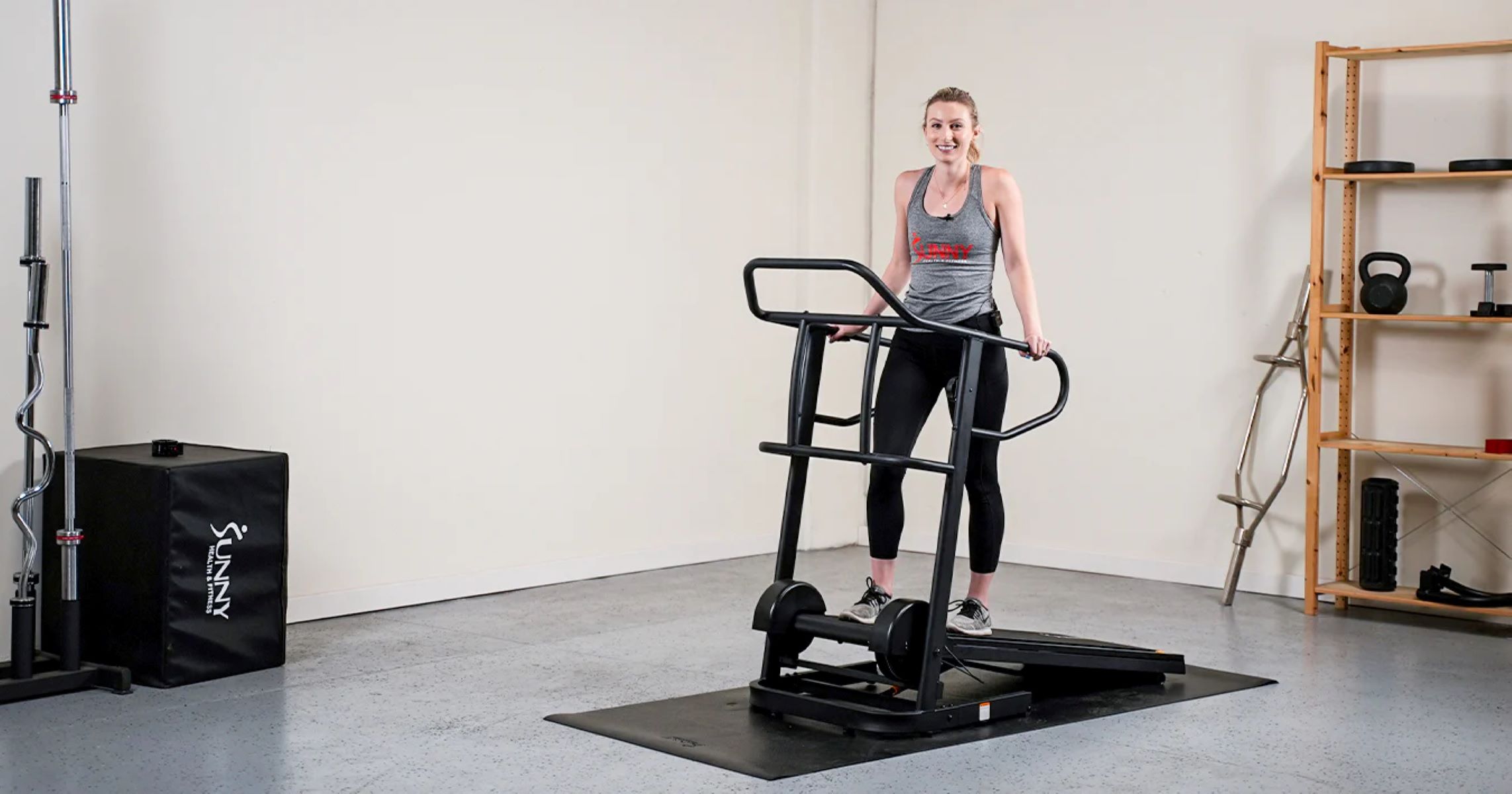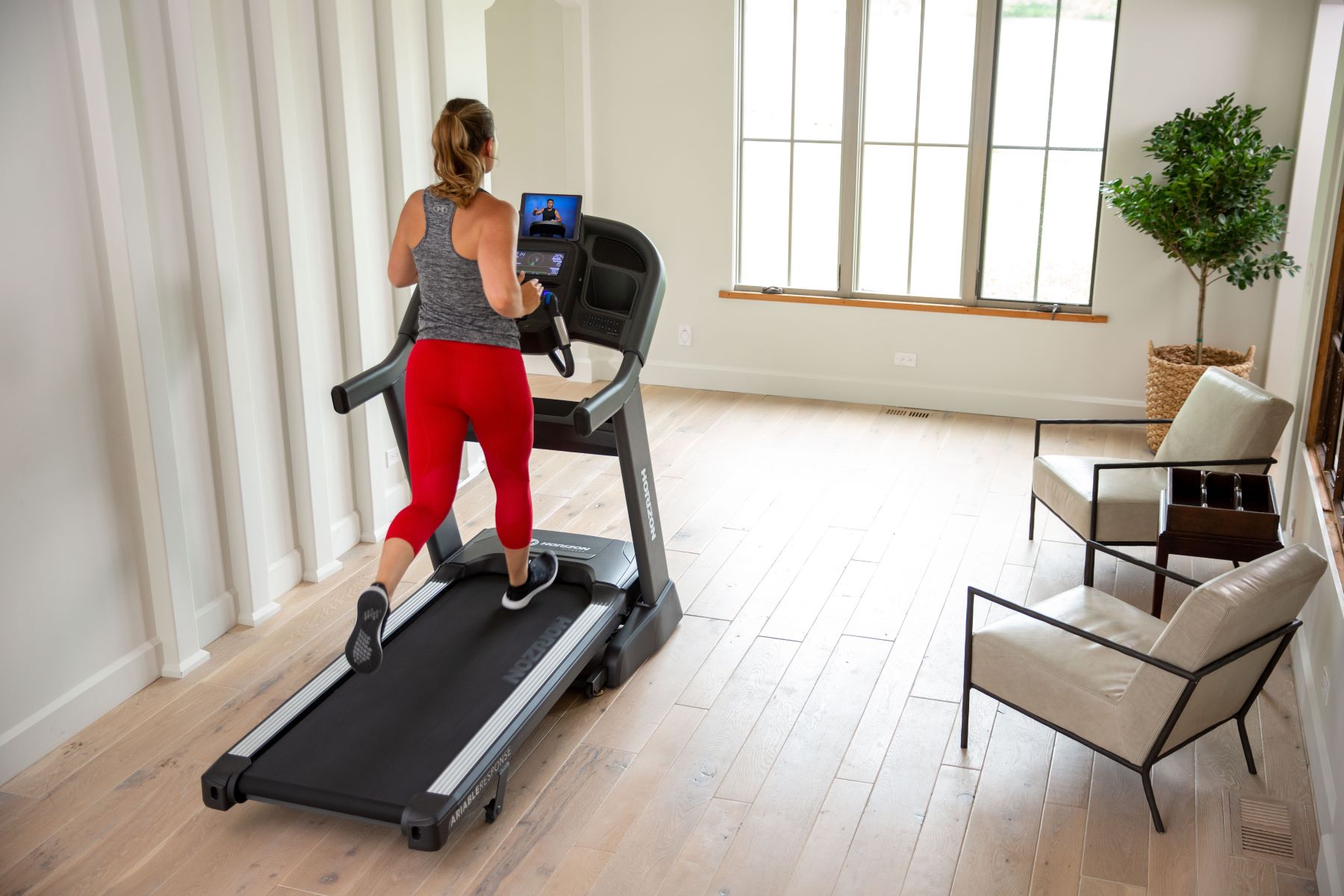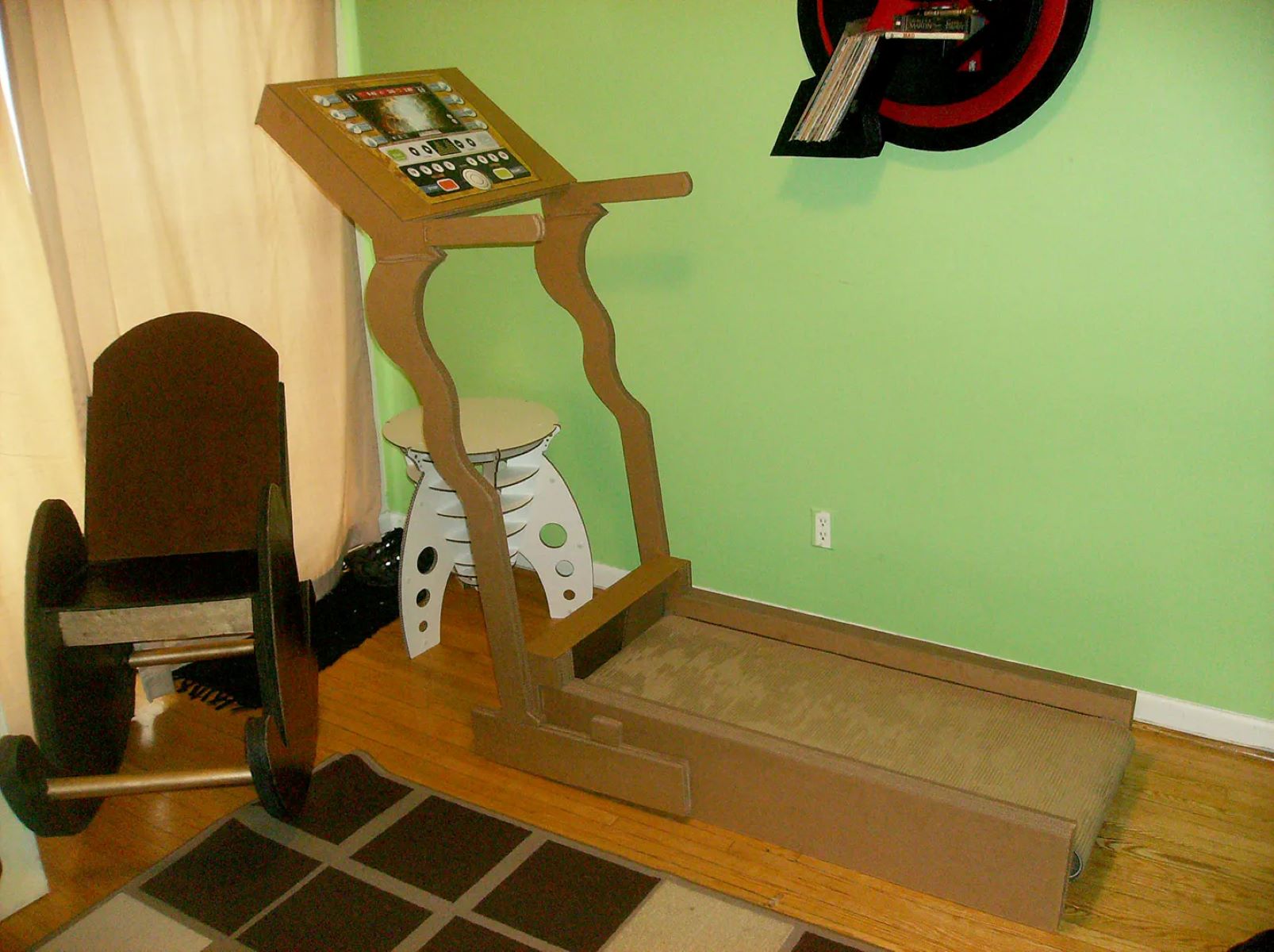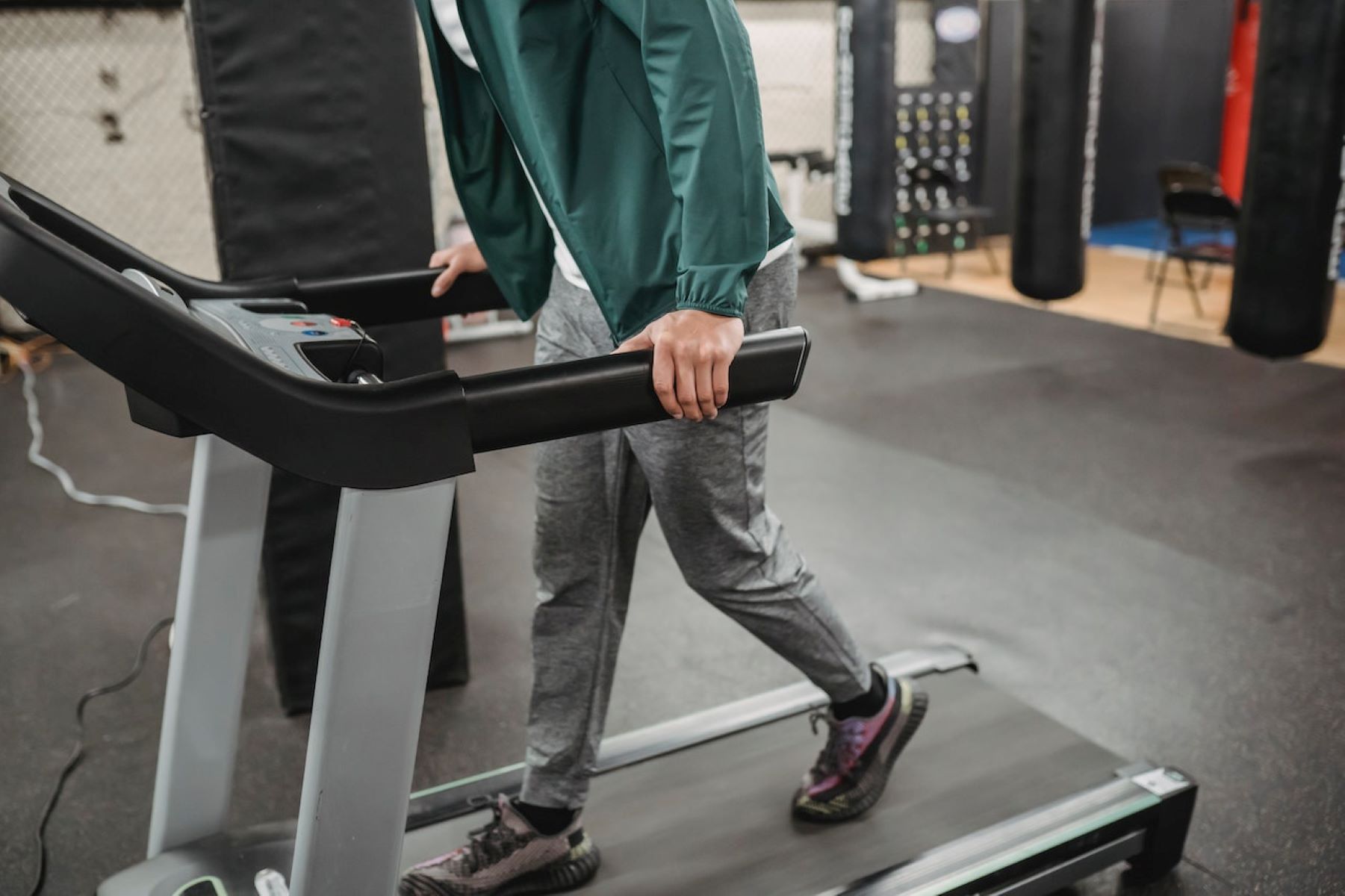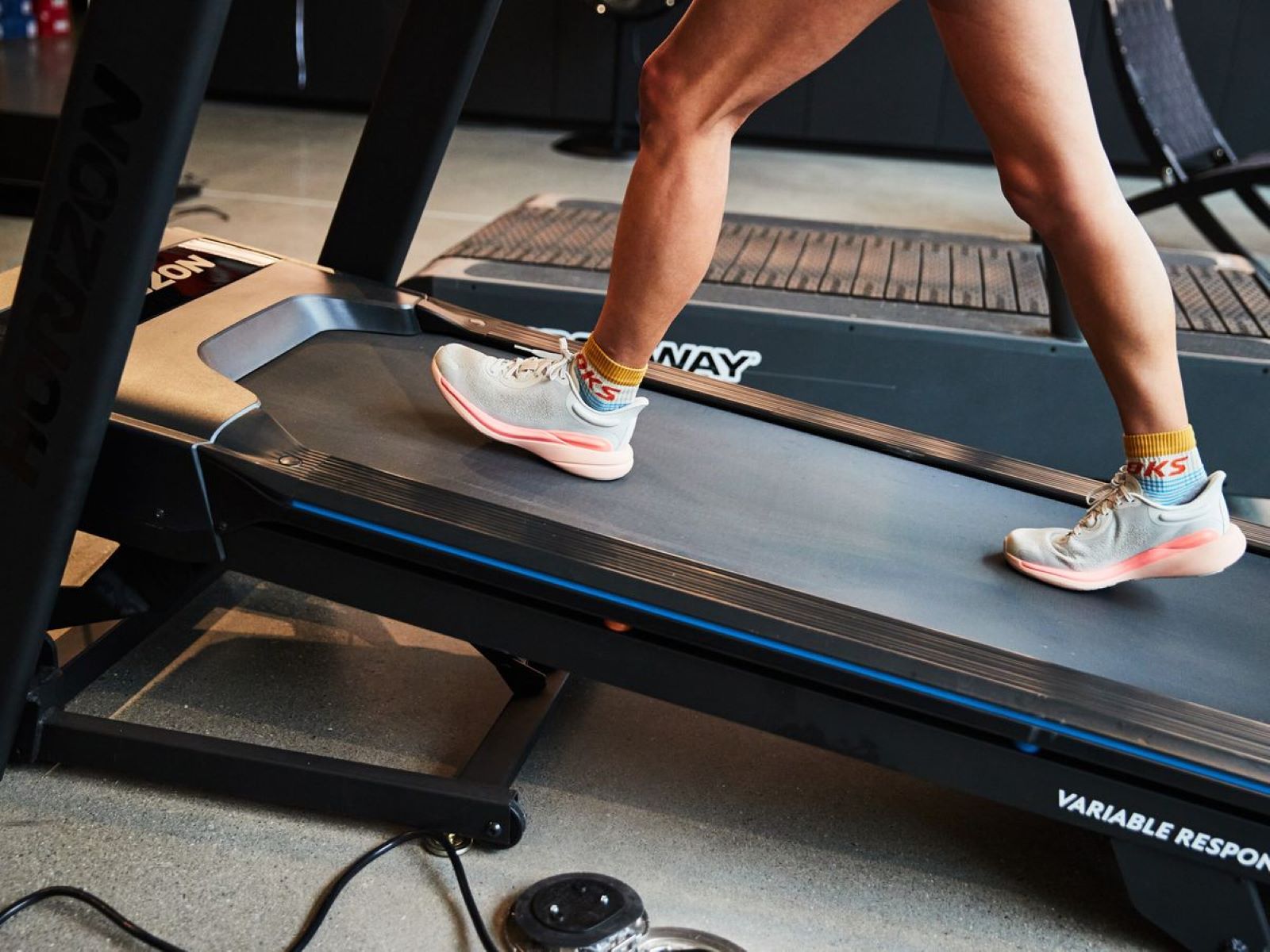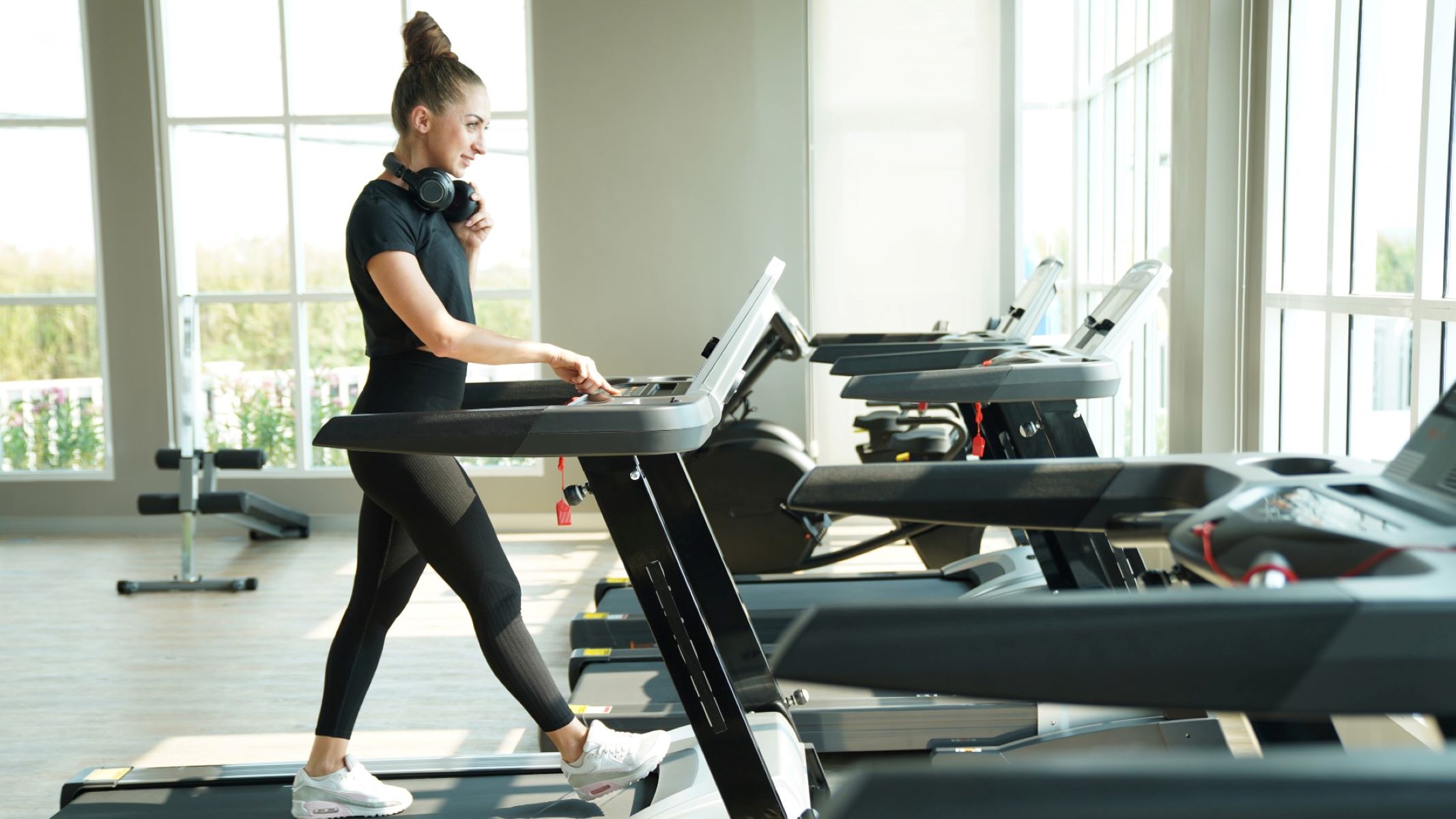

Featured
How To Lose Weight Walking On Treadmill
Modified: March 2, 2024
Discover the featured guide on how to lose weight walking on a treadmill. Start your fitness journey today with these effective tips and tricks.
Introduction
Walking on a treadmill is not only a convenient and accessible form of exercise, but it can also be an effective way to lose weight. Whether you are looking to shed a few pounds or maintain a healthy weight, walking on a treadmill can help you achieve your goals.
Walking is a low-impact exercise that is suitable for people of all fitness levels. It provides a cardiovascular workout, burns calories, and helps to strengthen muscles. By incorporating walking into your daily routine, you can improve your overall fitness and wellbeing.
But why choose a treadmill over outdoor walking? One of the primary advantages is the ability to control your environment. With a treadmill, you can adjust the speed, incline, and duration of your workout to suit your individual needs and fitness level. This allows you to gradually increase the intensity of your workouts and challenge yourself as you progress.
Additionally, walking on a treadmill offers a predictable and cushioned surface, which can help reduce the risk of joint pain or injuries that may occur when walking on uneven terrain. It also eliminates obstacles such as traffic, weather conditions, or unsafe walking paths, making it a safer option for those who prefer exercising indoors.
In this article, we will explore the benefits of walking on a treadmill for weight loss and provide you with tips on how to maximize your workout. From setting goals and planning your workout to monitoring your heart rate and tracking your progress, we will cover everything you need to know to make the most out of your treadmill walking routine.
Benefits of Walking on a Treadmill for Weight Loss
Walking on a treadmill can offer numerous benefits when it comes to weight loss. Here are some key advantages:
- Burns calories: Walking on a treadmill is a fantastic way to burn calories. The exact number of calories burned will depend on factors such as your weight, speed, and incline level. However, on average, walking at a moderate pace can burn around 300-400 calories per hour. By incorporating regular treadmill walking sessions into your routine, you can create a consistent calorie deficit and gradually shed excess pounds.
- Aids in fat loss: Walking on a treadmill primarily targets fat as a fuel source. While other forms of exercise may primarily rely on carbohydrates, walking at a moderate intensity engages the aerobic system, which utilizes fat for energy. This makes it an ideal exercise for those looking to reduce body fat and slim down.
- Boosts metabolism: Regular treadmill walking can also help boost your metabolism. As you increase your cardiovascular fitness and build lean muscle mass, your body becomes more efficient at burning calories throughout the day, even when at rest. This means that your body will continue to burn fat and calories long after your treadmill workout has concluded.
- Improves cardiovascular health: Walking on a treadmill is a great way to improve your cardiovascular health. It increases your heart rate, strengthens your heart muscle, and improves blood circulation throughout the body. Regular cardiovascular exercise, such as treadmill walking, can help reduce the risk of heart disease, high blood pressure, and other cardiovascular conditions.
- Accessible and convenient: One of the major advantages of walking on a treadmill is its accessibility and convenience. Unlike other forms of exercise, you can walk on a treadmill regardless of the weather conditions or time of day. Whether you prefer to walk in the comfort of your own home or at the gym, a treadmill provides a convenient option for incorporating physical activity into your daily routine.
Incorporating treadmill walking into your weight loss journey can yield significant results. However, it’s important to remember that achieving weight loss requires a combination of regular exercise and a healthy, balanced diet. The benefits of walking on a treadmill for weight loss can be maximized when combined with a nutritious eating plan that supports your fitness goals.
Setting Goals and Planning Your Workout
Setting specific and achievable goals is essential when it comes to successful weight loss through treadmill walking. Here are some steps to help you set goals and plan your workout effectively:
- Define your goals: Start by determining your weight loss goals. Be specific about how much weight you want to lose and in what timeframe. Set realistic goals that are attainable and sustainable for long-term success.
- Consult with a healthcare professional: If you have any underlying health conditions or concerns, it is always advisable to consult with a healthcare professional before embarking on a weight loss journey. They can provide guidance based on your individual needs and help you create a safe and effective workout plan.
- Schedule your workouts: Plan your treadmill walking sessions in advance and schedule them into your weekly routine. Consistency is key when it comes to achieving weight loss goals, so aim for at least 3-5 sessions per week, each lasting between 30-60 minutes.
- Vary your workouts: To keep your treadmill workouts interesting and prevent boredom, incorporate variety into your routine. Mix up the speed, incline, and duration of your sessions. You can also experiment with different workout formats, such as intervals or hills, to challenge your body and increase calorie burn.
- Keep track of your progress: Monitoring your progress is important to stay motivated and track your achievements. Use a fitness tracker or smartphone app to record your walking distance, time, and calories burned. Seeing your progress can provide a sense of accomplishment and encourage you to keep pushing toward your goals.
- Modify your goals as needed: Along your weight loss journey, it’s normal to reassess and modify your goals. As you progress, you may find that you need to adjust your targets to continue challenging yourself. Be flexible and open to adapting your goals as necessary.
Remember, creating a sustainable and enjoyable workout routine is crucial for long-term success. Find a balance between challenging yourself and listening to your body’s needs. If you feel fatigued or experience any pain while walking on a treadmill, be sure to take rest days and give your body time to recover.
By setting goals and planning your treadmill workouts effectively, you can keep yourself motivated and on track to achieve your weight loss objectives.
Proper Form and Posture While Walking on a Treadmill
Maintaining proper form and posture while walking on a treadmill is essential for maximizing the effectiveness of your workout and preventing injuries. Here are some tips to ensure you maintain the correct form:
- Stand tall: Keep your head up, shoulders relaxed, and spine in a neutral position. Avoid slouching or leaning forward, as this can put strain on your neck and back.
- Engage your core: Activate your core muscles by pulling your belly button towards your spine. This helps stabilize your torso and promotes better posture during your treadmill walking session.
- Keep a natural stride: Walk with a smooth and natural stride. Take comfortable steps, landing softly on your heel and rolling through to your toes. Avoid overstriding or taking steps that are too short.
- Swing your arms: Let your arms swing naturally at your sides as you walk. Bend your elbows at a 90-degree angle and allow them to swing in sync with your leg movements. This helps maintain balance and contributes to an efficient walking motion.
- Watch your stride length: A moderate stride length is ideal for treadmill walking. Avoid taking giant strides or shuffling your feet. Strive for a smooth and natural motion that feels comfortable and allows you to maintain a steady pace.
- Use the treadmill handrails sparingly: While the handrails are there for support, try not to rely heavily on them. Holding onto the handrails can affect your natural gait and reduce the effectiveness of your workout. Only use the handrails when needed for balance or if you feel unsafe.
- Don’t forget to breathe: Practice deep and rhythmic breathing as you walk on the treadmill. Inhale through your nose and exhale through your mouth. Breathing deeply helps oxygenate your muscles and increases endurance.
By focusing on maintaining proper form and posture, you can optimize your treadmill walking workout and minimize the risk of injuries. Remember to start with a warm-up and cool-down to prepare your muscles for exercise and aid in recovery. Stretching after your workout can also help improve flexibility and prevent muscle tightness.
Keep in mind that everyone’s body is unique, and you may need to make slight adjustments to find the form and stride length that works best for you. Listen to your body and make changes as necessary to ensure a comfortable and effective treadmill walking experience.
Incorporating Interval Training into Your Treadmill Workout
Interval training is a highly effective method for boosting calorie burn, improving cardiovascular fitness, and accelerating weight loss. By incorporating interval training into your treadmill workout, you can take your exercise routine to the next level. Here’s how to get started:
- Warm-up: Begin your treadmill workout with a 5-10 minute warm-up at a comfortable pace. This helps prepare your muscles for the more intense intervals to come.
- Work and rest intervals: Alternate between periods of high-intensity work and active recovery. For example, increase the speed or incline of the treadmill for 1-2 minutes to elevate your heart rate and challenge your body, followed by a period of lower intensity for 1-2 minutes to allow your heart rate to recover. Repeat this cycle for the duration of your workout.
- Vary intensity and duration: Experiment with different intervals to keep your body challenged and prevent plateau. You can increase the speed or incline during the work intervals or decrease the recovery interval time. Play around with the duration and intensity to find what works best for you and matches your fitness level.
- Example interval workout: A popular interval workout is the “Tabata” protocol. This involves 20 seconds of all-out effort followed by 10 seconds of rest, repeated for eight cycles. You can customize the intervals based on your fitness level and goals.
- Cool-down: Finish your treadmill workout with a 5-10 minute cool-down at a lower intensity to gradually bring your heart rate back to normal. This helps prevent dizziness or muscle soreness.
Interval training is not only efficient but also helps to increase your metabolism and continue burning calories even after your workout has ended. It also adds variety and excitement to your treadmill sessions, preventing boredom and keeping you engaged.
However, it’s important to listen to your body and not overdo it. Start with shorter intervals and gradually increase the intensity and duration as you build your stamina and fitness level. If you have any existing health conditions or concerns, consult with a healthcare professional before incorporating high-intensity interval training (HIIT) into your routine.
Incorporating interval training into your treadmill workouts can provide a powerful boost to your weight loss efforts and help you reach your fitness goals more efficiently.
Monitoring Your Heart Rate for Effective Weight Loss
Monitoring your heart rate while walking on a treadmill is a valuable tool for ensuring you are exercising at an intensity that promotes weight loss. Here’s why tracking your heart rate matters and how to do it:
1. Understanding your target heart rate: Your target heart rate is the range at which your heart should be beating during exercise to achieve optimal fat burning. This range is typically calculated based on your age and fitness level. By monitoring your heart rate, you can ensure that you are working out within this target range.
2. Tracking your heart rate: There are a few different ways to monitor your heart rate while walking on a treadmill. The most common methods include:
- Heart rate monitors: These wearable devices can track your heart rate in real-time. Some heart rate monitors come in the form of chest straps or wristbands, while others are integrated into fitness watches or fitness tracking apps on your smartphone.
- Pulse sensors on the treadmill: Many treadmills are equipped with built-in sensors on the handlebars that can measure your heart rate. Simply grip the sensors during your workout, and the machine will display your heart rate on the console.
3. Finding your target heart rate zone: To determine your target heart rate zone, subtract your age from 220. Multiply that number by the desired percentage of your maximum heart rate you wish to work out at. For weight loss, aim to exercise at around 60-70% of your maximum heart rate.
4. Benefits of exercising in your target heart rate zone: Exercising within your target heart rate zone ensures that you are working at an intensity that maximizes the number of calories burned from fat. It also helps prevent the risk of overexertion or exercising too intensely, which could lead to burnout or injury.
5. Adjusting your speed and incline: To stay within your target heart rate zone, you may need to adjust the speed and incline of the treadmill during your workout. Increase the speed or incline to raise your heart rate, or decrease it to bring your heart rate down. Experiment to find the right combination for your desired intensity.
Remember, heart rate monitoring is just one tool to assist you in your weight loss journey. It’s essential to combine it with other factors like proper nutrition, consistency in your workouts, and overall lifestyle habits to achieve your goals.
Incorporating heart rate monitoring into your treadmill workouts can help you tailor your exercise intensity for effective weight loss and ensure that you are making the most out of your time on the treadmill.
Tracking Your Progress and Staying Motivated
Tracking your progress and staying motivated are essential components of a successful weight loss journey. Here are some tips to help you track your progress and maintain your motivation while walking on a treadmill:
- Keep a workout journal: Track your treadmill workouts in a journal or a digital fitness app. Note down details such as the distance covered, duration, calories burned, and any personal achievements or milestones. Having a record of your progress can provide a sense of accomplishment and help you see how far you’ve come.
- Take body measurements: In addition to tracking your treadmill workouts, take body measurements regularly. Measure your waist, hips, thighs, and other target areas to monitor changes in your body composition. Sometimes the scale might not reflect your progress accurately, but body measurements can give you a clearer picture of your transformation.
- Celebrate milestones: Set smaller milestones along the way to your ultimate weight loss goal. Celebrate each milestone you achieve, whether it’s walking a certain distance or fitting into a smaller clothing size. Treat yourself to non-food rewards, such as buying a new workout outfit or enjoying a spa day.
- Find an accountability partner: Having someone to share your journey with can provide much-needed support and motivation. Find a friend, family member, or workout buddy who can hold you accountable and help keep you on track. You can establish regular check-ins, workout together, or even join virtual fitness groups for added motivation.
- Track non-scale victories: Weight loss is not just about numbers on the scale. Pay attention to how you feel, both physically and emotionally. Notice any non-scale victories, such as improved energy levels, better sleep, increased endurance, or improved mood. These victories can be powerful motivators on your weight loss journey.
- Find inspiration: Surround yourself with inspiration and positive influences. Follow fitness influencers on social media, read success stories, or join online communities where you can connect with others who are on a similar journey. Seeing others’ progress and hearing their stories can inspire and motivate you to keep pushing forward.
- Switch up your routine: To prevent boredom and maintain motivation, vary your treadmill workouts. Try different walking programs, experiment with interval training, or incorporate other forms of cardio or strength training exercises into your routine. Keeping your workouts fresh and exciting can help you stay engaged and enthusiastic.
Remember, staying motivated is a journey in itself. There will be ups and downs, but the key is to keep pushing forward, even when faced with challenges. Be kind to yourself and celebrate every step you take towards achieving your weight loss goals. With consistency, determination, and a positive mindset, you can stay on track and achieve the results you desire.
Safety Tips for Walking on a Treadmill
Walking on a treadmill is generally a safe and low-impact form of exercise, but it’s important to prioritize safety to prevent accidents or injuries. Here are some essential safety tips to keep in mind while walking on a treadmill:
- Start with a warm-up: Begin your treadmill workout with a 5-10 minute warm-up at a slower pace. This helps prepare your muscles for the more intense exercise that follows.
- Use the safety clip: Most treadmills are equipped with a safety clip or key that attaches to your clothing. Attach this clip to your clothing, and if you accidentally slip or lose your balance, it will automatically stop the treadmill.
- Pay attention to surroundings: Avoid distractions and stay focused on your workout. Be aware of your surroundings and avoid using electronic devices like smartphones or tablets while walking on the treadmill.
- Gradually increase intensity: If you’re new to treadmill walking, start with a slower pace and gradually increase the speed and incline as your fitness level improves. Avoid sudden increases in intensity that may strain your muscles or joints.
- Wear appropriate footwear: Choose footwear specifically designed for exercise. Wear supportive athletic shoes with good traction to prevent slipping or sliding on the treadmill belt.
- Stay hydrated: Keep a bottle of water nearby and take regular sips to stay hydrated throughout your workout. Dehydration can lead to dizziness or fatigue, affecting your balance and overall safety.
- Use handrails sparingly: While it’s tempting to hold onto the handrails for support, try to minimize your reliance on them. Holding onto the handrails can affect your natural walking form and decrease the effectiveness of your workout. Only use them when necessary for balance.
- Listen to your body: Pay attention to any pain, discomfort, or unusual sensations while walking on the treadmill. If you experience any chest pain, dizziness, or shortness of breath, stop exercising immediately and consult a healthcare professional.
- Cool down and stretch: After your workout, gradually decrease the speed and incline of the treadmill for a 5-10 minute cool-down. This allows your heart rate to return to normal and helps prevent muscle soreness. Stretching exercises can also aid in recovery and flexibility.
- Read and follow instructions: Familiarize yourself with the user manual of the treadmill to understand its features and safety precautions. Follow the manufacturer’s guidelines for proper use and maintenance.
By following these safety tips, you can minimize the risk of accidents or injuries and ensure a safe and effective treadmill walking experience. Prioritize your well-being, take it at your own pace, and enjoy the benefits of this accessible and convenient form of exercise.
Conclusion
Walking on a treadmill can be an excellent way to achieve weight loss and improve overall fitness. It offers a convenient and accessible form of exercise that can be customized to suit your individual needs and goals. By incorporating treadmill walking into your routine, you can burn calories, lose body fat, and improve your cardiovascular health.
We explored the many benefits of walking on a treadmill for weight loss, such as its ability to burn calories, aid in fat loss, boost metabolism, and improve cardiovascular health. Additionally, we discussed the importance of setting goals, planning your workouts, maintaining proper form and posture, incorporating interval training, monitoring your heart rate, tracking progress, and staying motivated. These elements are all vital to ensuring a successful and effective treadmill walking routine.
Remember, achieving weight loss through treadmill walking requires consistency, dedication, and a balanced approach that includes a healthy diet. It’s important to listen to your body, adjust your workouts as needed, and celebrate both small and significant milestones along the way.
While walking on a treadmill is generally safe, it’s crucial to prioritize safety by following guidelines such as using the safety clip, paying attention to surroundings, wearing appropriate footwear, and staying hydrated. By taking these necessary precautions, you can minimize the risk of accidents or injuries and focus on maximizing the benefits of your treadmill workouts.
So get ready to put on your walking shoes, hop on that treadmill, and start your weight loss journey. With determination, consistency, and the knowledge gained from this article, you are well-equipped to achieve your weight loss goals and maintain a healthy lifestyle.

